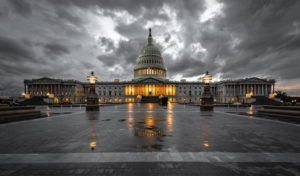
Government fails at times precisely because it is tasked with solving society’s most difficult problems.
Climbers on Mount Everest face threatening avalanches, oxygen-depriving altitude, blinding snow squalls, and an ever-persistent risk of falling. As a result, most people who set out from Everest’s base camp ultimately fail to reach the summit. Why do climbers fail so often? Some lack experience; others are not sufficiently strong; and still others succumb to sickness along the way. But there is another, still more fundamental reason why so many climbers fail to reach the top of the world’s tallest mountain: because it’s hard.
Such an insight captures well an important lesson about the work that government undertakes. It is also difficult.
Peter Schuck’s recent book, Why Government Fails So Often: And How It Can Do Better, offers a masterfully rich, highly readable catalog of many explanations for why U.S. federal government programs can fail. The obstacles confronting government, Schuck says, are “systemic” and “deeply embedded,” including interest group pressures, misaligned political incentives, a lack of adequate information, moral hazard on the part of program beneficiaries, bureaucrats who are “demoralized, poorly equipped, marginalized, publicly scorned, and (literally) undisciplined,” and a highly legalistic operating environment that hampers innovation and responsiveness.
Schuck is right to search for explanations for governmental failure and to offer possible solutions. No matter how much you think government should be doing, no one seriously wants the tasks government properly assumes to be performed poorly.
But we should also be realistic about what government is up against when taking on even its most widely accepted tasks. Whether in preventing crime, educating children, reducing unemployment, stopping accidents, or protecting the environment, government’s work is rarely easy.
Government’s work is difficult because government serves as society’s back-up squad. It is called in to help when people, acting on their own, cannot solve their own problems. It is no accident that the standard justification for governmental regulation, one accepted by both Democratic and Republican administrations, is described as “market failure.” Market failure occurs when private incentives are misaligned and when other institutions in society have failed to promote overall welfare. By definition, the problems on government’s plate are often society’s most challenging ones. They often call for getting people to do those things they lack any ready incentive to do on their own.
Solving public policy problems also involves making tradeoffs. Society wants to eliminate the risks of workplace and environmental accidents, but without halting economic activity that brings with it an irreducible amount of these risks. It wants to help the poor, but also to avoid creating dependencies and disincentives for work. It wants government to succeed, but also wants to keep taxes under control. Given tradeoffs like these, and others, society must inevitably accept some degree of bad with the good. What some people perceive as a government “failure” may just be the result of government responsibly grappling with tradeoffs, as optimizing along multiple dimensions necessarily means failing to maximize on just one dimension.
Of course, tradeoffs exist in the private sphere too. But private-sector decision-makers have the lodestar of either profit or shareholder value to guide them in making their tradeoffs. Success in the business world is judged by a single bottom-line, not the much more challenging need to optimize along multiple dimensions, as arises perennially in the public sector. And yet even with their clearer lodestar and strong economic incentives to succeed, businesses still fail every year at a nontrivial rate. We should hardly be surprised that governmental institutions fail too.
Perhaps the biggest surprise might be that government does not fail more than it does. Schuck explicitly recognizes that government can and does yield real successes; indeed, he devotes an entire chapter of his book to governmental successes and their lessons. He also recognizes, if not in such a dedicated way, how difficult are some of the underlying problems that government has been given to solve.
Yet someone reading Schuck’s book could easily come away lacking sufficient appreciation for how tough domestic policy problems really are. In any domain, success and failure must be placed in context, taking into consideration the underlying difficulty of the challenge. About 4,000 individuals have reached the top of Mt. Everest over the past sixty years, while Mt. Fuji in Japan sees more than 200,000 people reach its summit every year. A key reason for the disparity is obviously that Everest climbers face a much tougher challenge.
A small plaque sitting on his desk in the Oval Office appropriately reminds President Obama that “Hard things are hard.” Of course, even some of the toughest challenges are surmountable, and it is always possible to improve. For this reason, Peter Schuck has performed an important service by so incisively chronicling the variety of structural impediments that can add to government’s already difficult challenges, as well as by offering potential reform strategies for making government more successful than it currently is. Yet just as it is vital to study and learn from government failure so as to do better in the future, it is important as well to maintain a realistic perspective. Sometimes the biggest reason for failure may simply be because it’s hard.
This essay is part of The Regulatory Review’s seven-part series, Is Government Prone to Fail?
Pictured above is the U.S. Senate Brumidi Corridor Committee Room.




